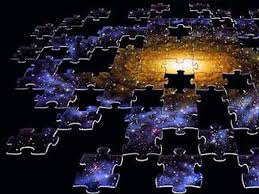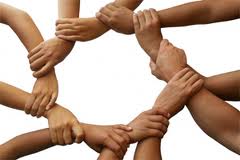 We are living in a day, when maybe more than ever, there are growing chasms, nasty collisions, and ugly cultural wars being fought around which ideologies, worldviews, theologies, systems, and perspectives on social issues will shape the world we live in. One doesn’t have to look far in the arenas of politics, the church, and economics to see this reality. The following are blatant examples of these wars going on. Who can forget the gong show last year in America exhibited in the utter intransigence of the left and the right to budge nary an inch over how to deal with the budget and debt ceiling crisis. The polarization and unwillingness to seriously dialogue and seek solutions from both sides led to the shutting down of the American gov’t. What about the kerfuffle that the singer Neil Young stirred up in the last couple of weeks with his, sometimes informed and sometimes ignorant of the facts, crusade against the oil sands development in northern Alberta? How about the media battle waged over the Christmas break between those who are pro and those who are against homosexuality and gay marriage demonstrated in the Duck Dynasty controversy, and the scrutinizing of Pope Francis’s comments about gays.
We are living in a day, when maybe more than ever, there are growing chasms, nasty collisions, and ugly cultural wars being fought around which ideologies, worldviews, theologies, systems, and perspectives on social issues will shape the world we live in. One doesn’t have to look far in the arenas of politics, the church, and economics to see this reality. The following are blatant examples of these wars going on. Who can forget the gong show last year in America exhibited in the utter intransigence of the left and the right to budge nary an inch over how to deal with the budget and debt ceiling crisis. The polarization and unwillingness to seriously dialogue and seek solutions from both sides led to the shutting down of the American gov’t. What about the kerfuffle that the singer Neil Young stirred up in the last couple of weeks with his, sometimes informed and sometimes ignorant of the facts, crusade against the oil sands development in northern Alberta? How about the media battle waged over the Christmas break between those who are pro and those who are against homosexuality and gay marriage demonstrated in the Duck Dynasty controversy, and the scrutinizing of Pope Francis’s comments about gays.
In leadership circles, there are the ongoing debates about the merits of flattening out and implementing of more egalitarian models of leadership versus the more hierarchical, top down styles of leading. In systems and organizational theory forums, there are discussions over whether a centralized or de-centralized system is better than the other. Then there are the social justice issues as they relate to where we shop based on the ethics of how our clothes are produced. Do we know whether the workers who are producing our favorite brand name clothes are being paid a fair wage and working in horrific conditions or not? Are all the box stores and multi-nationals to be avoided in favor of the boutique shop? What about only shopping from local, organic producers? Are simple, small churches better than large, mega churches?
more egalitarian models of leadership versus the more hierarchical, top down styles of leading. In systems and organizational theory forums, there are discussions over whether a centralized or de-centralized system is better than the other. Then there are the social justice issues as they relate to where we shop based on the ethics of how our clothes are produced. Do we know whether the workers who are producing our favorite brand name clothes are being paid a fair wage and working in horrific conditions or not? Are all the box stores and multi-nationals to be avoided in favor of the boutique shop? What about only shopping from local, organic producers? Are simple, small churches better than large, mega churches?
 In the church, there are vociferous theological battles being waged over everything from the existence of hell; to whether homosexuality is an acceptable sexual orientation one is born with, or an abnormal, sinful choice made out of rebellion or gender confusion; to hermeneutics (how we should interpret the Bible). The Neo-reformers and emergent folk are lobbing verbal grenades of judgment at each other that at times gets quite personal. People are being branded heretics for believing in the ‘openness of God’ perspective (the view that God may choose not to exert meticulous control over everything that happens in this world), or for having a different angle on the penal substitution theory of the atonement. The post modern emergents are not without fault. Often emergents can come across like snobby elitist liberals who have somehow attained perfect enlightenment on the truth, and hold disdain for their right wing conservative brothers and sisters who they view as stuck in the dark ages and neanderthals.
In the church, there are vociferous theological battles being waged over everything from the existence of hell; to whether homosexuality is an acceptable sexual orientation one is born with, or an abnormal, sinful choice made out of rebellion or gender confusion; to hermeneutics (how we should interpret the Bible). The Neo-reformers and emergent folk are lobbing verbal grenades of judgment at each other that at times gets quite personal. People are being branded heretics for believing in the ‘openness of God’ perspective (the view that God may choose not to exert meticulous control over everything that happens in this world), or for having a different angle on the penal substitution theory of the atonement. The post modern emergents are not without fault. Often emergents can come across like snobby elitist liberals who have somehow attained perfect enlightenment on the truth, and hold disdain for their right wing conservative brothers and sisters who they view as stuck in the dark ages and neanderthals.
I can appreciate the fear and concern coming from the conservative neo-reformers that absolute truth is being watered down into a milquetoast relativism, or a universalism where it doesn’t matter what you believe because all roads lead to God. Yet the longer I live and the more I study history, I realize that most of our wrestles with truth are not new. None of us have the corner on truth or on Jesus. We all know in part. There is absolute truth, but none of us have the corner on absolute truth. A genuine seeker of truth is both humble and hungry to find truth never claiming that they have fully arrived. We are all progressively coming into greater revelation of the Truth. We all are needing to close the gap between what we say we believe, and how we then live.
watered down into a milquetoast relativism, or a universalism where it doesn’t matter what you believe because all roads lead to God. Yet the longer I live and the more I study history, I realize that most of our wrestles with truth are not new. None of us have the corner on truth or on Jesus. We all know in part. There is absolute truth, but none of us have the corner on absolute truth. A genuine seeker of truth is both humble and hungry to find truth never claiming that they have fully arrived. We are all progressively coming into greater revelation of the Truth. We all are needing to close the gap between what we say we believe, and how we then live.
The resulting polarization, mean spirited vitriol, and violent gun slinging with words and actions is leaving a lot of collateral damage, division, paralysis, disdain for leadership, rejection of the traditional institutions they lead, and even sometimes death when folks revert to violence to defend their point of view.
Around the world we see the push and pull either towards tribalism or nationalism, rigid fundamentalism or intolerant liberalism, and the accordion effect from centralization to decentralization and back. Just look at the mess in the Middle East, especially Syria. These clashes of ideology are not going away. Our world seems like a complex matrix made up of opposite, yet intersecting universes. It is overwhelming and scary. We can choose to either bury our heads in the sand and pretend these tectonic collisions are not happening, or out of fear we can dig in and defend our present position at all costs.
There is a desperate need for a different kind of leadership. Most people are fed up with the bickering and are looking for leaders who will bring people together rather than polarize. We need leaders who seek a common center that embraces paradox while avoiding partisan politics and the extremes of either side. We need leaders who have an appreciation for conflicting ideas where the answer may not be either/or but both.
 “Matrix leadership is the ability to travel between two divergent universes holding onto the strengths of each worldview while discarding what is blatantly evil, and challenging the polarizing behavior or blind spots of either worldview. Matrix leaders are at ease with paradox and mystery. They are able to rise above myopic thinking to see the big picture solutions that transcend partisan politics. They seek a higher ethic, give space for divergent opinions, and don’t see diversity as a threat, but a thing of beauty.”
“Matrix leadership is the ability to travel between two divergent universes holding onto the strengths of each worldview while discarding what is blatantly evil, and challenging the polarizing behavior or blind spots of either worldview. Matrix leaders are at ease with paradox and mystery. They are able to rise above myopic thinking to see the big picture solutions that transcend partisan politics. They seek a higher ethic, give space for divergent opinions, and don’t see diversity as a threat, but a thing of beauty.”
Ecclesiastes 7:18 says it this way: “Its best to stay in touch with both sides of an issue. A person who fears God deals responsibly with all of reality, not just a piece of it”
Matrix Leadership Skills to Practice and Develop:
- Become a Gatekeeper, Synergistic Thinker, and Cross-Cultural Translator: This calls for a person who is willing to immerse themselves in and understand
 cultures, languages, and the customs of 2 worldviews that are polar opposites in many ways. For example my wife grew up in Japan and I grew up in Africa, yet we are both Canadians. How Africans view time is quite different from how the Japanese view time. A Japanese train is rarely late while a meeting in Africa rarely starts on time.The funny thing is that when it comes to time my wife is more African and I’m more Japanese! This skill requires developing a third worldview or perspective that can hold in tension the diversity of 2 opposing ways of thinking on an issue and offer up a 3rd alternative. They are good at using humor to poke at the blind spots and inconsistencies in a particular perspective in a non-threatening way. They are good at translating the meta-narrative of one worldview into the language of the opposing worldview in a way that brings appreciation and understanding.
cultures, languages, and the customs of 2 worldviews that are polar opposites in many ways. For example my wife grew up in Japan and I grew up in Africa, yet we are both Canadians. How Africans view time is quite different from how the Japanese view time. A Japanese train is rarely late while a meeting in Africa rarely starts on time.The funny thing is that when it comes to time my wife is more African and I’m more Japanese! This skill requires developing a third worldview or perspective that can hold in tension the diversity of 2 opposing ways of thinking on an issue and offer up a 3rd alternative. They are good at using humor to poke at the blind spots and inconsistencies in a particular perspective in a non-threatening way. They are good at translating the meta-narrative of one worldview into the language of the opposing worldview in a way that brings appreciation and understanding.
- Become a Statesman and Storyteller: This skill requires searching for creative solutions that move opposite poles to a common center where both sides compromise and feel they are able to contribute. Learn to tell stories that unify us around a grand vision, and communicate our deepest longings in the language of the heart.
 Become a Curious Life Long Learner: Read, study and become versed in both sides of an issue of ideology, theology, or economics. Most of us react to the other side out of ignorance and fear.
Become a Curious Life Long Learner: Read, study and become versed in both sides of an issue of ideology, theology, or economics. Most of us react to the other side out of ignorance and fear.
- Become a Peace Maker and Negotiator: Learn the skills of conflict resolution. Take a course on the subject. Make it part of your life’s work to help bring reconciliation between estranged family members, friends, and conflicts in the work place.
-
“Matrix leaders are bridge builders, peace makers, and statesmen or women who can hold in tension paradox without compromising core values and ideas.”
- Become a Relationship Broker and Connector: Create spaces where you bring people of different views together to hear each others story. Develop friendships and enter into respectful dialogue with people who hold an opposing view on politics, theology, economics, or sexual orientation. Do not enter into the dialogue with the goal of trying to change the other persons beliefs, but simply listen and try to understand their point of view.
- Become a Systems Architect and Collaboration Coach : A systems architect will give room for different
 shapes and structures to co-exist and even support each other without trying to change one another, compete with one another or judge one another. In a large business, organization, or church where there are multiple departments that are competing for resources, there is a need for leaders who will help competing entities see that through sharing of resources all can win.
shapes and structures to co-exist and even support each other without trying to change one another, compete with one another or judge one another. In a large business, organization, or church where there are multiple departments that are competing for resources, there is a need for leaders who will help competing entities see that through sharing of resources all can win.
-
“Wouldn’t it be wonderful if large, mega churches or businesses would financially support and help start simple church movements or small businesses without having to control them or keep them under their organizational umbrella.”
- Develop a thick skin as you will have arrows shot at you from both sides.







